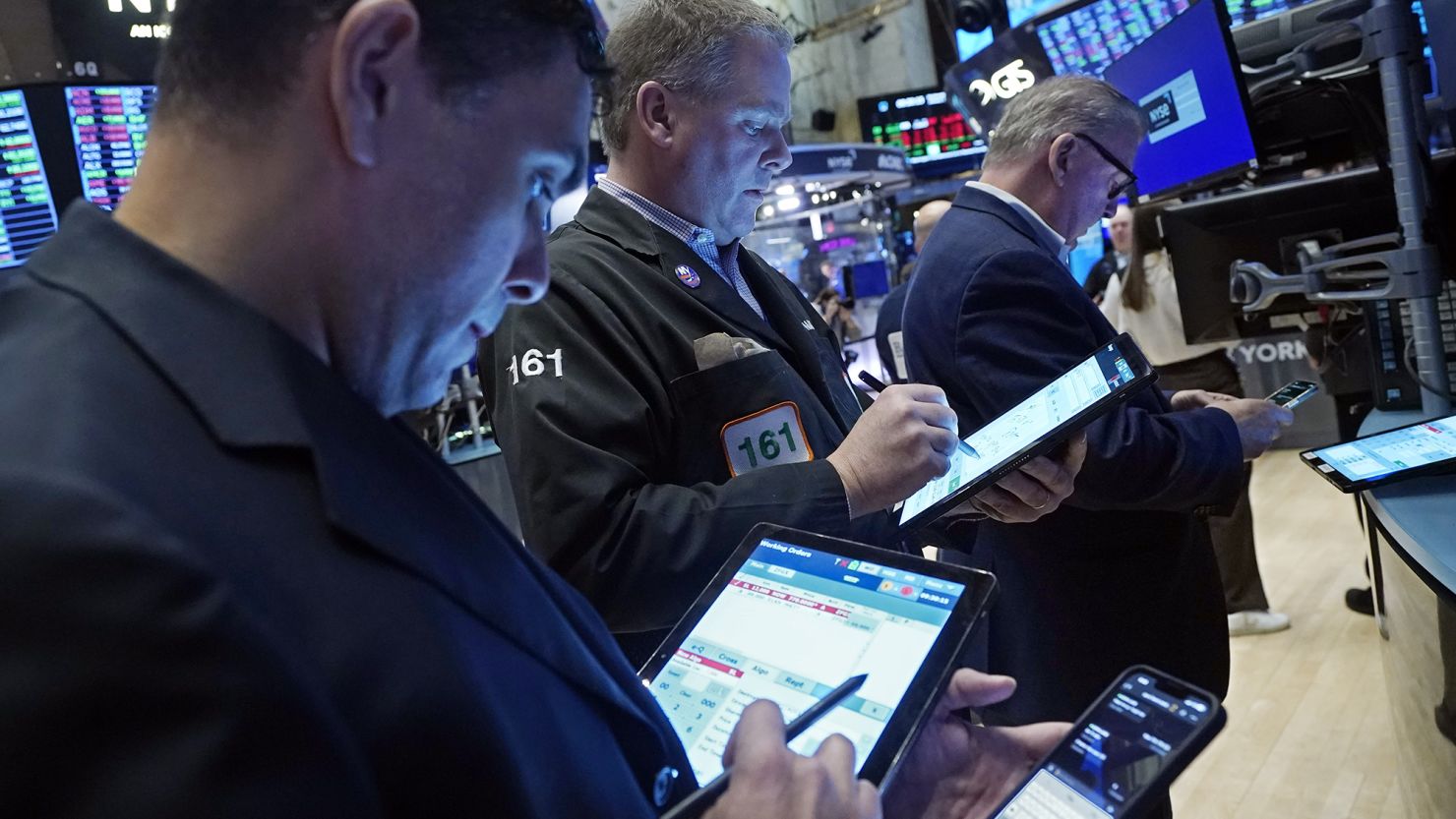A version of this story first appeared in CNN Business’ Before the Bell newsletter. Not a subscriber? You can sign up right here. You can listen to an audio version of the newsletter by clicking the same link.
Is Wall Street’s favorite clique of tech stocks in need of a makeover? Some investors think so.
Most of the Magnificent Seven stocks have reclaimed their leadership of the market this year, with shares of Nvidia, Meta Platforms, Alphabet and Microsoft reaching record highs. But two stocks in the group haven’t pulled their weight.
Tesla shares have slid roughly 25% this year on concerns about rising competition from electric vehicle makers in China and its second consecutive earnings miss reported in January. Shares of Apple have declined roughly 2% during the same period on worries about falling sales in China.
Meanwhile, shares of Nvidia, Meta, Amazon, Microsoft and Alphabet have continued their climb from last year. Meta beat fourth-quarter earnings expectations in results posted on February 1 and announced its first-ever dividend, sending its stock surging more than 20% the next day to a new record.
Many investors are skeptical that the Magnificent Seven will match their blockbuster gains from 2023, even if they continue their leadership this year. Some say that divergence in the group’s performance indicates that a new pecking order is emerging.
Jim Worden, chief investment officer at the Wealth Consulting Group, says he believes the group should consolidate to the “Fab Five,” which he classifies as the Magnificent Seven minus Tesla and Apple.
“The challenges that both Apple and Tesla have in terms of the consumer, in terms of China and in terms of their growth, it’s just going to be more challenging,” said Worden.
Bank of America strategist Michael Hartnett coined the term “Magnificent Seven,” a nod to a 1960 American western film of the same name, in a research note last May. That term quickly caught fire on Wall Street as those stocks raced higher, pushing the S&P 500 index to jump 24% last year as interest rates hovered at a 23-year high, geopolitical turmoil swirled and investors dealt with a regional banking crisis.
Nvidia’s stock, the biggest gainer among the group and the benchmark index, soared a whopping 239% in 2023, with the rest of its elite tech cohort notching double- or triple-digit gains.
The big board for tech stocks has seen reshuffling in the past. For years, the Jim Cramer-coined “FAANG” stocks — Facebook-parent Meta, Apple, Amazon, Netflix and Google-parent Alphabet — were heralded as the market’s top dogs. Then tech names got pummeled in 2022 as the Federal Reserve began its aggressive interest rate hiking campaign and investors fled growth stocks.
Interest in other, smaller artificial intelligence players is also picking up this year. Super Micro Computer shares have surged 140% so far in 2024, following a 246% jump in 2023, after the company in January reported second-quarter results that blew past expectations and raised its full-year revenue forecast. Nvidia and chipmaker Advanced Micro Devices are among the server producer’s customers.
“There is a big leadership change underway in the Magnificent Seven stocks,” wrote Louis Navellier, chairman of Navellier & Associates, in a note on Tuesday. “Money is on the move, and it is headed to more small and mid-capitalization companies that are prospering from explosive sales and earnings growth.”
Still, some investors are sticking by the Magnificent Seven laggards. Nancy Tengler, chief investment officer at Laffer Tengler Investments, says that her firm plans on adding to its Tesla position if the stock falls to $160. The electric-vehicle maker’s stock closed Wednesday at $187.58 a share.
She says she’s taking a long-term view on the stock and believes that the company’s innovation in developing autonomous driving software and EV charging stations will help pad the blow from demand problems.
“I wouldn’t write off the names that are underperforming,” said Tengler.
It’s never been more expensive to be a Disney fan
After a recent trip with her husband and two children to Walt Disney World Resort in Orlando, Florida, Gina Lee said it felt like she had lost “all concept of money and time.”
“It has gotten more expensive. It’s crazy,” said the New York-based content creator. “I feel like when you go to Disney, it’s almost like planning a wedding. You’re like ‘Eh, I’m already in it, what’s 20 or 30 more bucks?’ Before you know it, you’re way out of control – but you’re in this Disney mindset.”
Over the past couple of years, prices have gone up across the Disney-verse, reports my colleague Samantha Delouya.
Not only have theme park visits gotten more expensive, but so have Disney’s cruise vacations, souvenirs and the company’s streaming services. Its timeshare program, Disney Vacation Club, raised prices as of January 30. Over the summer, Disney quietly raised the prices at two of the adult-only restaurants on board its cruise ships to $135 per person for dinner, a nudge up of $10, according to the Disney Cruise Line Blog.
Some of these increases are modest and common to Disney’s rivals in the entertainment and travel businesses. Inflation has played a big role, too. But one thing is certain: being a Disney fan has never been more expensive.
The price hikes come as Disney faces a watershed moment in its history. The global entertainment giant is grappling with a still-unprofitable transition to streaming, recent box office blunders — like the soon-forgotten animated feature “Wish,” released in November — and a murky CEO succession plan. A legal battle with Ron DeSantis, the governor of Florida, which is the state that holds Disney’s largest and most profitable theme parks, is ongoing.
World’s largest chipmaker TSMC to build a second factory in Japan
Chip giant Taiwan Semiconductor Manufacturing Company (TSMC) is upping its output in Japan as it continues to expand its global presence, reports my colleague Diksha Madhok.
The world’s largest chipmaker will build a second semiconductor fabrication plant, or fab, in the country in “response to rising customer demand,” TSMC said in a statement Tuesday.
Japan Advanced Semiconductor Manufacturing (JASM), a subsidiary majority-owned by TSMC, plans to start construction by the end of 2024, it added. The facility is scheduled to be operational by the end of 2027.
The company had announced in 2022 that it would build a second semiconductor plant in the southwestern US state, adding to plans for an existing fab and raising its overall investment in Arizona from $12 billion to $40 billion.
The investment has previously been lauded by US President Joe Biden as a sign that US manufacturing “is back.”




